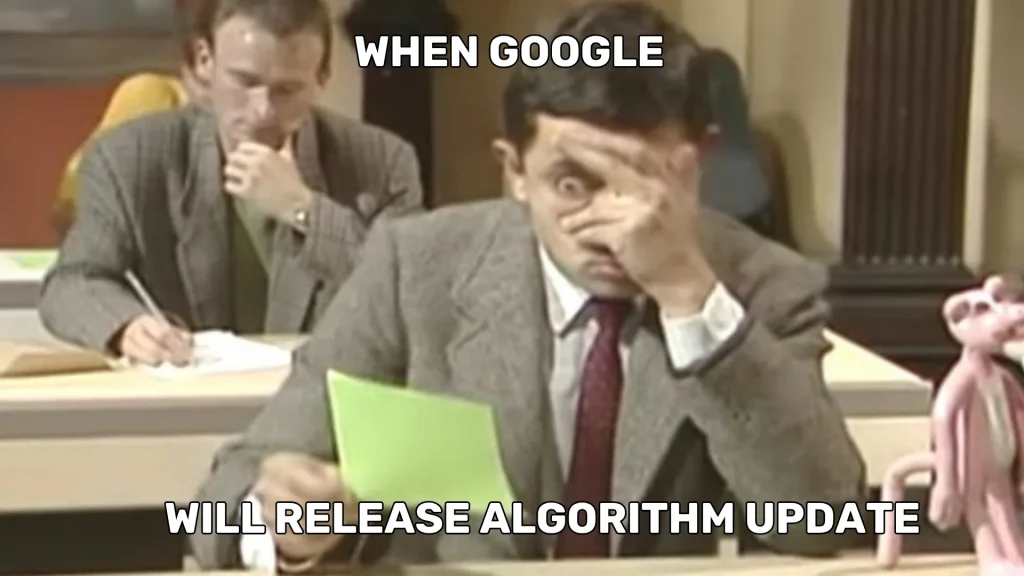What is the Google algorithm and how does it work?
The Google algorithm is essentially a set of rules and procedures the search engine uses to crawl, index, and evaluate billions of web pages. Thanks to this, when you search for information, Google can instantly display the most relevant and useful results. Search algorithms exist to ensure those results satisfy users — who are, in a way, Google’s customers.
How do Google’s algorithms work?
- Analyzing the user’s query — the first step is interpreting what you’re looking for. The algorithms analyze your query to understand its context and the intent behind it. Are you seeking information, looking to use a service, buy a product, or get directions to a place?
- Indexing — Google uses crawlers (so-called Googlebots) that regularly scan the web for content and build an index of websites along with the information found on them. When visiting pages, the bots automatically collect data such as content quality, the number and quality of links pointing to the site, page load speed, site security, and so on.
- Ranking — after analyzing millions of pages, the systems match each one to specific queries and decide which page best answers a given query. The goal is that when a user types a query into Google, they see at the top of the results the pages most likely to address their needs. Based on these assessments, pages are ordered in the search results.
What updates has Google introduced to the algorithm so far?
Updates are an essential part of how the search engine functions — much like software updates on a computer. They fix algorithmic issues, add new features, and aim to improve the system overall. The first algorithm improving Google Search was introduced in 1996. Since then, the company has regularly rolled out enhancements to improve the quality of results shown to users — though at times these updates have also undone months or even years of work by specialists optimizing sites for visibility in search.
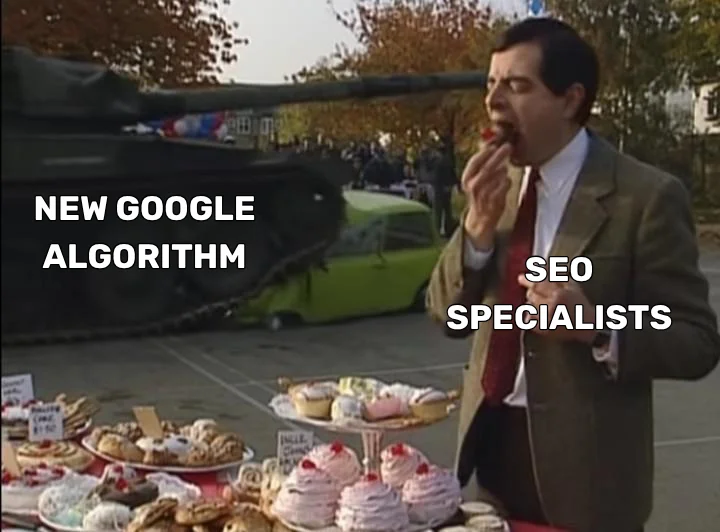
Past Google algorithm updates
- PageRank — Google’s first algorithm, which evaluated pages based on the number and quality of links to them. The more high-quality backlinks, the higher the page ranked in Google.
- Panda — the first major Google Search update. This algorithm combats low-quality content, duplication, and excessive keyword stuffing. It promotes pages with unique, valuable content.
- Penguin — focuses on the quality of links pointing to your site. Unethical linking practices are penalized with lower rankings.
- Hummingbird — helps Google better understand complex queries and deliver results more aligned with user intent.
- RankBrain — uses artificial intelligence to interpret queries that are new to Google, better matching results to user intent.
- Mobile-First Indexing — in response to the growth of mobile searches, Google began rewarding sites optimized for mobile devices.
- Page Layout (Above the Fold) — an update focusing on page layout, especially “above the fold” content. Pages with too many above-the-fold ads were ranked lower.
- Pirate — a crackdown on piracy. Search results no longer included pages infringing copyright; Google penalized sites sharing illegal copies of content.
- Phantom — after this update, search results excluded low-quality content.
- Exact Match Domain (EMD) Update — reduced the advantage of domains whose names exactly match search queries but do not offer valuable content.
- Payday Loan — fought spam in searches for high-risk, often financial terms such as “payday loans.”
- Pigeon — improved local search results by better aligning rankings with user location.
- Mobilegeddon (Mobile-Friendly Update) — rewarded sites optimized for mobile devices.
- Google Intrusive Interstitials Mobile Penalty — penalties for sites that display intrusive interstitials on mobile devices that hinder access to content.
- Medical Update — significantly impacted health and wellness sites, requiring higher accuracy and credibility of information.
- Site Diversity Update — aimed to increase domain diversity in results, helping users avoid the dominance of single domains.
- Google BERT (Natural Language Processing Update) — introduced the BERT NLP model to help Google better understand word context in user queries.
The latest Google algorithm (March 2025) — what’s changed?
In March 2025, Google officially began rolling out the March 2025 Core Update, the first major algorithm update of 2025. The process ran from March 13 to March 27 and introduced comprehensive changes to Google’s ranking systems.
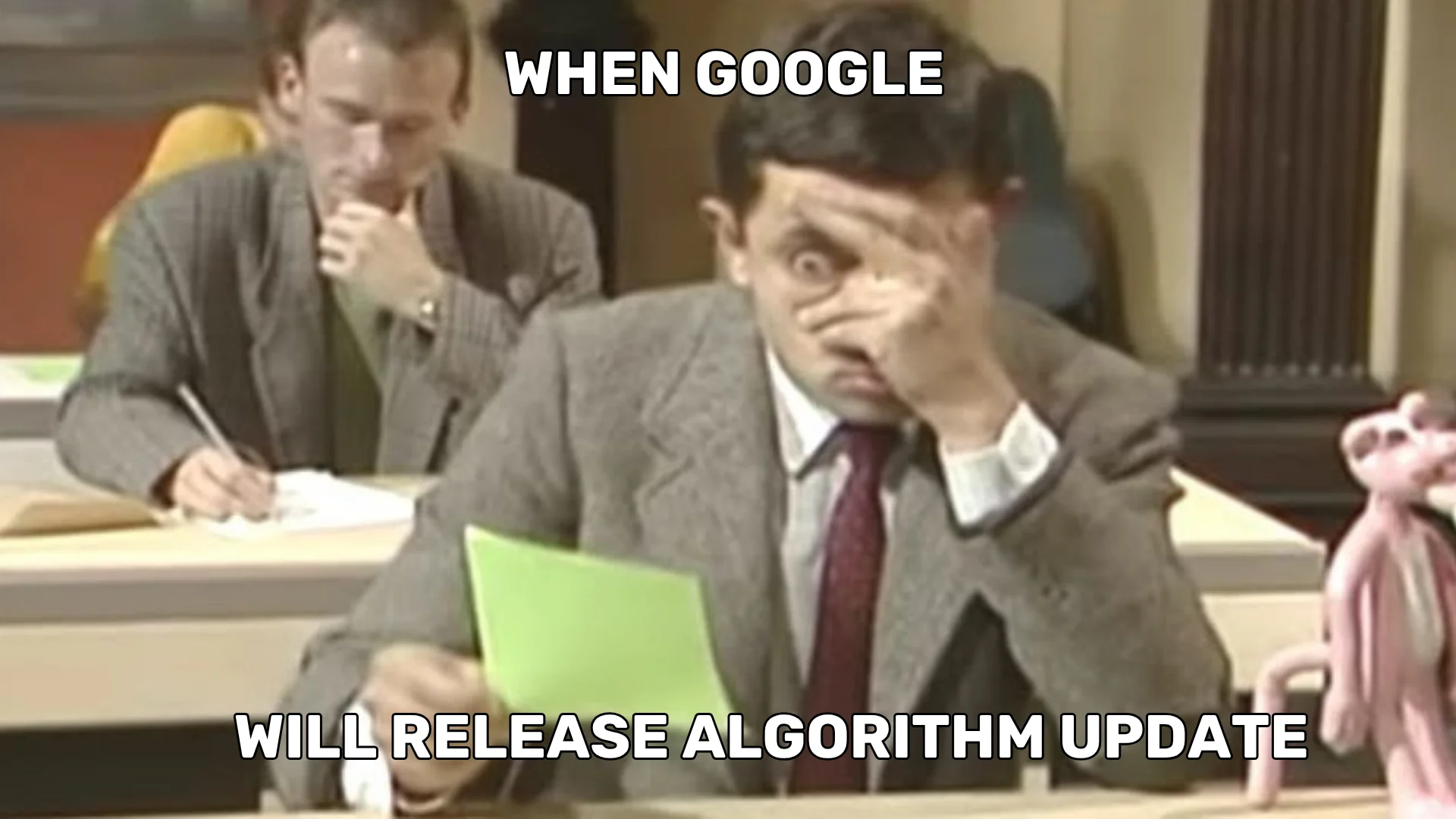
The main goal of this update is to improve the quality of search results. From now on, the search engine will surface more high-quality content and fewer texts created solely to boost rankings.
The aim of the changes:
To provide users with valuable and original information while limiting low-quality content, including that generated by AI.
What should you know about these updates?
1) Improving the quality of search results
High-quality content will now be identified and promoted more effectively. In Google’s eyes, high quality means valuable, original content — not indistinct “mush” generated by AI. Google places even greater emphasis on the E-E-A-T framework (Experience, Expertise, Authoritativeness, Trustworthiness), which evaluates the author’s real-world experience, expertise, authority, and the credibility of the content. How exactly the search engine will determine which content is original and whether it was written with AI remains something of a black box.
2) Changes to spam policies
Google is also updating its spam policies to more effectively eliminate content that provides no value. Sites copying other websites without adding anything new will be penalized by the latest algorithm.
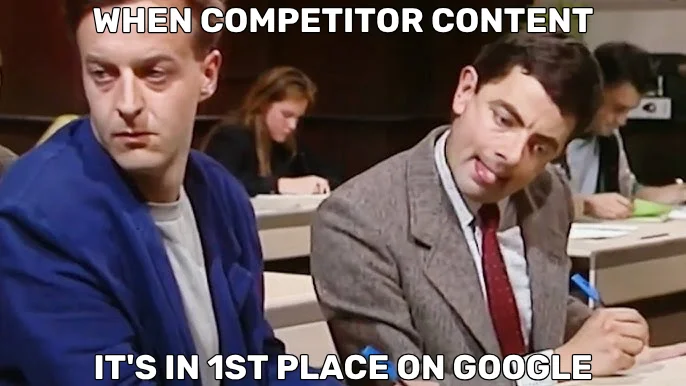
The new rules aim to reduce the visibility of sites used for spam or containing content that adds nothing of substance. The goal is to improve the safety and quality of information available to users.
3) Introduction of new AI features
Alongside the March core algorithm update, Google also announced the introduction of AI Mode — a new search mode leveraging an advanced version of Gemini 2.0. This feature enables users to ask complex questions requiring deeper understanding and analysis.
Additionally, AI Overviews (AI-generated summaries) were upgraded to Gemini 2.0, offering more accurate answers — especially in programming and advanced mathematics.
The new policies aim to reduce the visibility of sites used for spam or containing low-value content. The goal is to improve the safety and quality of information available to users.
How will the algorithm update affect website rankings?
Google makes it clear that its search systems are designed to evaluate each page and subpage individually, presenting users with the content that is most valuable and useful.
“Google doesn’t rely on a single system to filter text for quality and usefulness. Ranking systems use many signals and subsystems, allowing them to assess websites far more effectively.”
This means that even if your website contains some less useful, AI-generated, or unoriginal materials, the systems can still rank individual subpages highly if they contain high-quality content. However, if the balance tips in favor of low-quality texts, Google may deem the entire site unworthy of the first page. Ultimately, Google wants users to be satisfied with the results — so they’ll use Google more.
The biggest changes may affect sites with low-quality content, those relying on outdated SEO methods, sites with weak technical optimization, and sites with a low E-E-A-T profile.
Therefore, removing content that adds no value can positively impact the visibility and effectiveness of your remaining pages. This is similar to content pruning and consolidation, where removing or redirecting low-value pages helps boost stronger assets. If you need help optimizing your site for better Google rankings — contact us.
Creating high-quality content is the best investment. Take a look at the chart showing the impressive visibility growth of one RODIN client after we optimized the site in fall 2023. The changes aimed to promote pages designed for users — not just search engines — which translated into overall traffic growth.
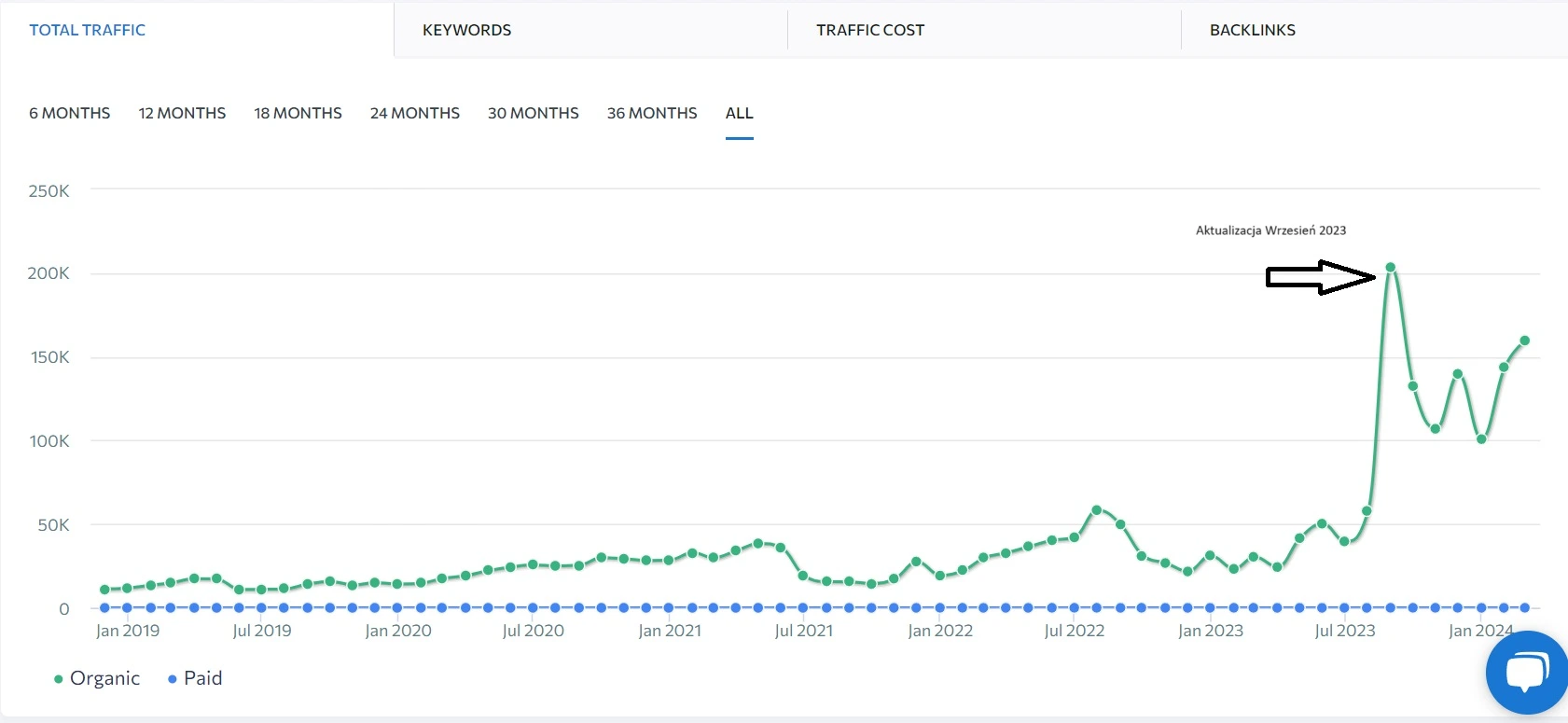
Algorithm update policies: Google March 2025 Spam Update
Following the March core update, Google also plans to roll out the Google June 2025 Spam Update. Scheduled for June 20–27, 2025, this update aims to further refine spam filtering and improve the quality of search results.
The new spam policies target abuse of expired domains, scaled content abuse, and site reputation abuse. Sites will appear in search only if they don’t violate these rules. What can hurt your site’s visibility after the algorithm change?

1) Cloaking
Showing different content to search engines than to regular visitors. An example: showing travel pages to crawlers but drug-related pages to users.
2) Doorway pages
Doorway pages are created to funnel you to another, less useful page. They’re designed to rank highly for specific queries. Examples include sets of near-duplicate URLs pointing to a single destination, or many location-based pages all sending users to one place.
It’s like creating many enticing links across the web that promise something interesting but all lead to a single, not-very-useful page. You search for a cake recipe and end up on a site selling mixers — not what you wanted.
3) Expired domain abuse
This happens when someone buys an expired domain to leverage its historical rankings to promote low-value content.
Example: imagine a site that used to be about healthy eating but was taken over and now sells dietary supplements.
4) Hacked content
Hackers can alter website content, adding malicious scripts or pages. This can expose users to dangerous content or malware infections.
5) Hidden text and hidden links
Hiding content on a page so it’s visible to search engines but not to users.
Examples include text hidden behind an image or written in white on white.
6) Keyword stuffing
Excessively using keywords on a page to manipulate rankings. Often these phrases don’t fit the content and read unnaturally (as this very text did before we took it under the knife!).
7) Link spam
Manipulating inbound and outbound links, e.g., buying links or engaging in large-scale exchanges, to influence a page’s position in search results.
How to write for the new Google algorithm?

If your site has featured unique and useful content so far, these new algorithm updates change nothing for you. But if you’ve mostly relied on AI to write, if your texts contain spam, or if you’ve used other practices now penalized by Google, it’s worth reviewing the latest Google guidelines. Here are the most important ones.
1. Content written for users, not for Google
What should you focus on? In short — content created with users in mind that delivers expert, useful knowledge.
2. Expert articles
Prioritize expert articles backed by credibility signals: sources, evidence of expertise, information about the author or the website.
3. No language errors
Obviously, review the text for spelling, grammar, and factual errors that can be easily verified.
4. Optimization for Core Web Vitals
In 2025, Google still places strong emphasis on Core Web Vitals — metrics related to page load speed, interactivity, and visual stability. The March 2025 update does not eliminate these requirements; it reinforces their importance as key factors affecting search positions.
Would you like us to manageyour company's marketing?
Request a free quote!
When will a site regain its former positions?
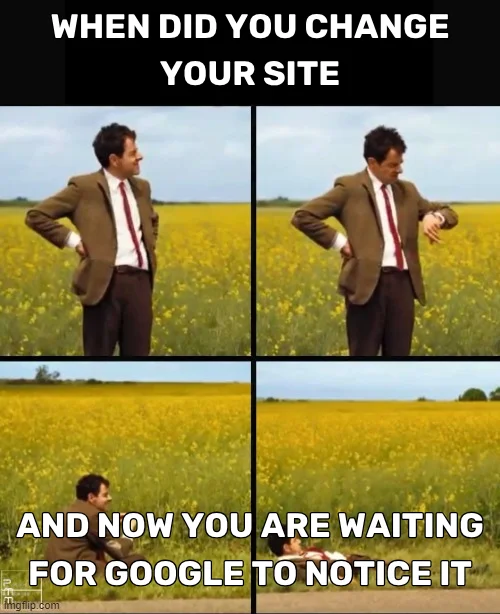
You’ve analyzed your mistakes, removed or revised problematic content, and eliminated spam? You’re surely wondering when you’ll see potential changes in ranking. We have an answer.
Remember: fixes don’t guarantee an automatic return to your previous — often better — ranking positions. Google does not guarantee any permanent spot — it all depends on how useful your content is and who currently has the most relevant page for the search intent.
Since web content is constantly changing, Google regularly updates its algorithms to best meet user needs. There is no fixed timeframe for when your changes will result in visible ranking improvements.
Major algorithm updates occur every few months. If your site’s visibility dropped after such an update, it may be difficult to regain previous positions before the next major change — even if you implement fixes.
Large algorithm updates happen several times a year. In 2025, Google has already rolled out the March Core Update and plans a Spam Update in June. If your site lost visibility after the March update, you may begin to see improvement after implementing appropriate changes, but full effects may be visible only after subsequent updates. For this, it’s best to enlist specialists like the Rodin team.
Spam vs. a manual action from Google — how to remove it?
To check whether your site has been subject to a manual action from Google, regularly monitor Google Search Console. You’ll find the “Security & Manual Actions” section, and within it the “Manual actions” report, which informs you about any manual penalties imposed on your site.
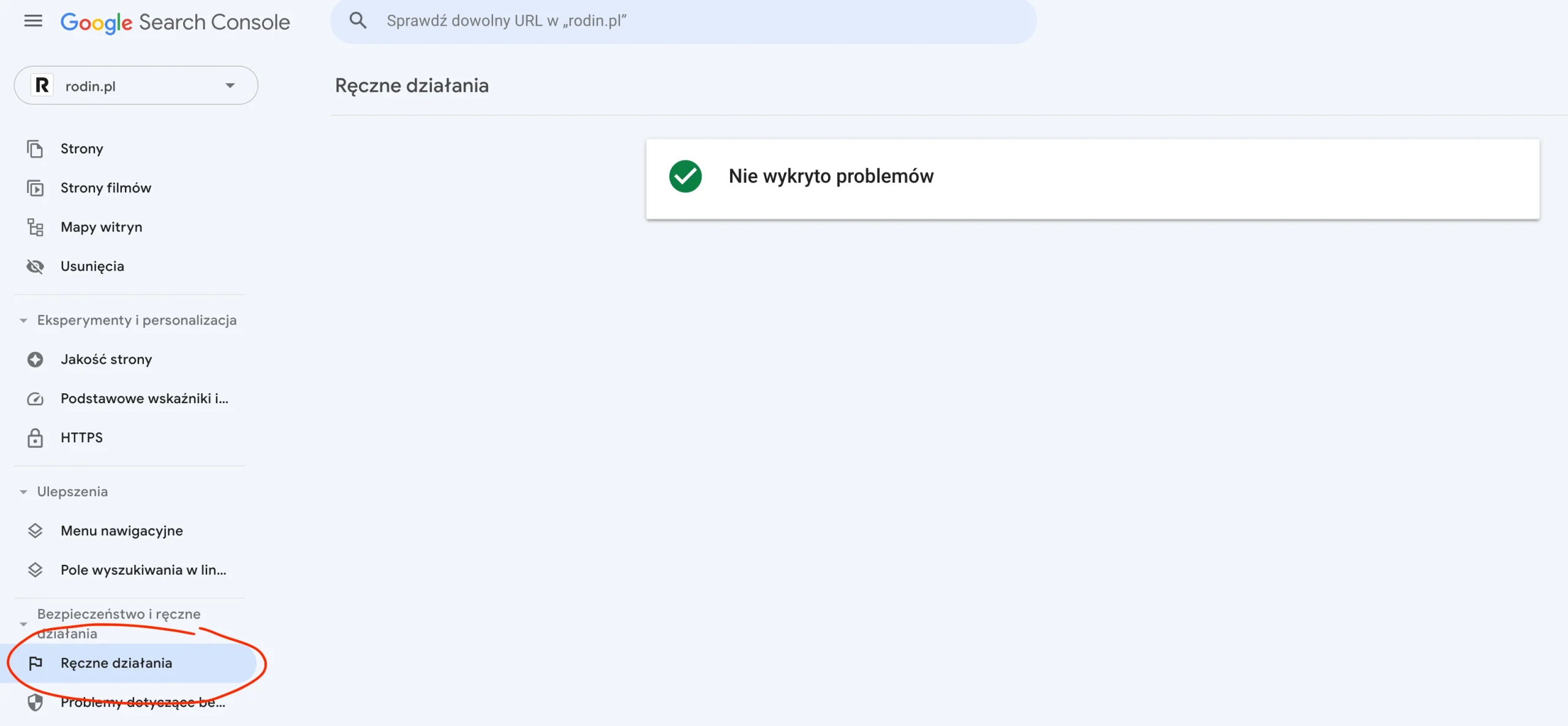
In this report, Google staff describe the issue in detail and may also provide links to specific subpages that violated Google’s guidelines. Sometimes they even indicate where exactly fixes are needed.
Manual penalties can be imposed for various reasons, all related to violating Google’s Webmaster Guidelines. The most common include improper SEO practices such as:
- hiding content; excessive use of keywords,
- creating artificial links to the site,
- publishing content of low value to users
Google prioritizes content quality and usefulness for users. Any attempts to manipulate search results may result in a manual penalty.
If your site has received such a penalty, it’s crucial to carefully review the information provided by Google and address the detected issues as soon as possible. Fix the site according to the recommendations and then submit a reconsideration request to Google. If you need help resolving SEO-related issues — contact us and we’ll help you fix them quickly.
The appeals process requires time and patience, but once the fixes are accepted, your site can regain its position in search results.
The key to avoiding manual penalties is following Google’s guidelines and focusing on creating valuable content for users.
Order a free SEO audit of your website!
Fill out the form and we will prepare an SEO analysis of your website for you!
How to respond to ranking changes?

Changes in Google’s algorithm may seem challenging to many. But they’re also an excellent opportunity to improve your site’s quality and adapt it to current requirements.
Regularly monitoring positions and analyzing content will help you maintain strong visibility in search results. Remember, Google’s systems select sites with the most relevant and valuable content. Focusing on quality and usefulness — instead of trying to trick the algorithm — will always be the most profitable strategy.
Preparing for change
Although you can’t always predict when and what changes Google will introduce, it’s worth keeping up with the company’s official communications. In some cases, Google announces major updates in advance, giving webmasters time to adapt. Regularly following industry sources and SEO forums helps you react quickly to new updates.
What else can you do? Use tools such as Google Analytics and Google Search Console. They let you analyze your site’s traffic in detail.
In-depth analysis will show what needs improvement and where to invest. Regularly reviewing this data and aligning your site with what Google supports will help you maintain a strong position in search.
Actions to take after an algorithm change
When you notice your rankings have shifted, your first step is diagnosing why. Check whether your site meets Google’s current requirements — especially regarding content quality and SEO optimization.

Google emphasizes that the most important thing is delivering valuable, unique content that answers users’ questions.
Other activities that influence search rankings
SEO optimization falls into three main areas: on-site and off-site.
On-Site Optimization
So-called on-site optimization includes all actions performed directly on your site to improve its visibility in search results. This includes:
- On-page content — creating valuable, unique content that answers users’ questions and needs.
- Keywords — placing relevant keywords in content, headings, and meta tags to help search engines understand the topic of the page.
- Site structure — organizing content with a logical hierarchy and using headings (H1, H2, H3, etc.).
- Image optimization — using descriptive alt tags and optimizing image sizes to make pages load faster.
Off-Site Optimization
Off-site optimization refers to activities outside your site that build its authority and trust in the eyes of search engines. The main aspects include:
- Link building — acquiring high-quality backlinks from other sites, signaling value and credibility to search engines.
- Social media — presence and activity on social platforms can indirectly influence SEO by increasing traffic and popularity.
- Google Business Profiles — for local businesses, optimizing your Google Business Profile (hours, contact details, reviews) is crucial.
Technical Optimization
Technical optimization covers aspects that affect indexing and rankings. Key elements include:
- Page speed — optimizing load times to improve user experience and increase your chances of better rankings.
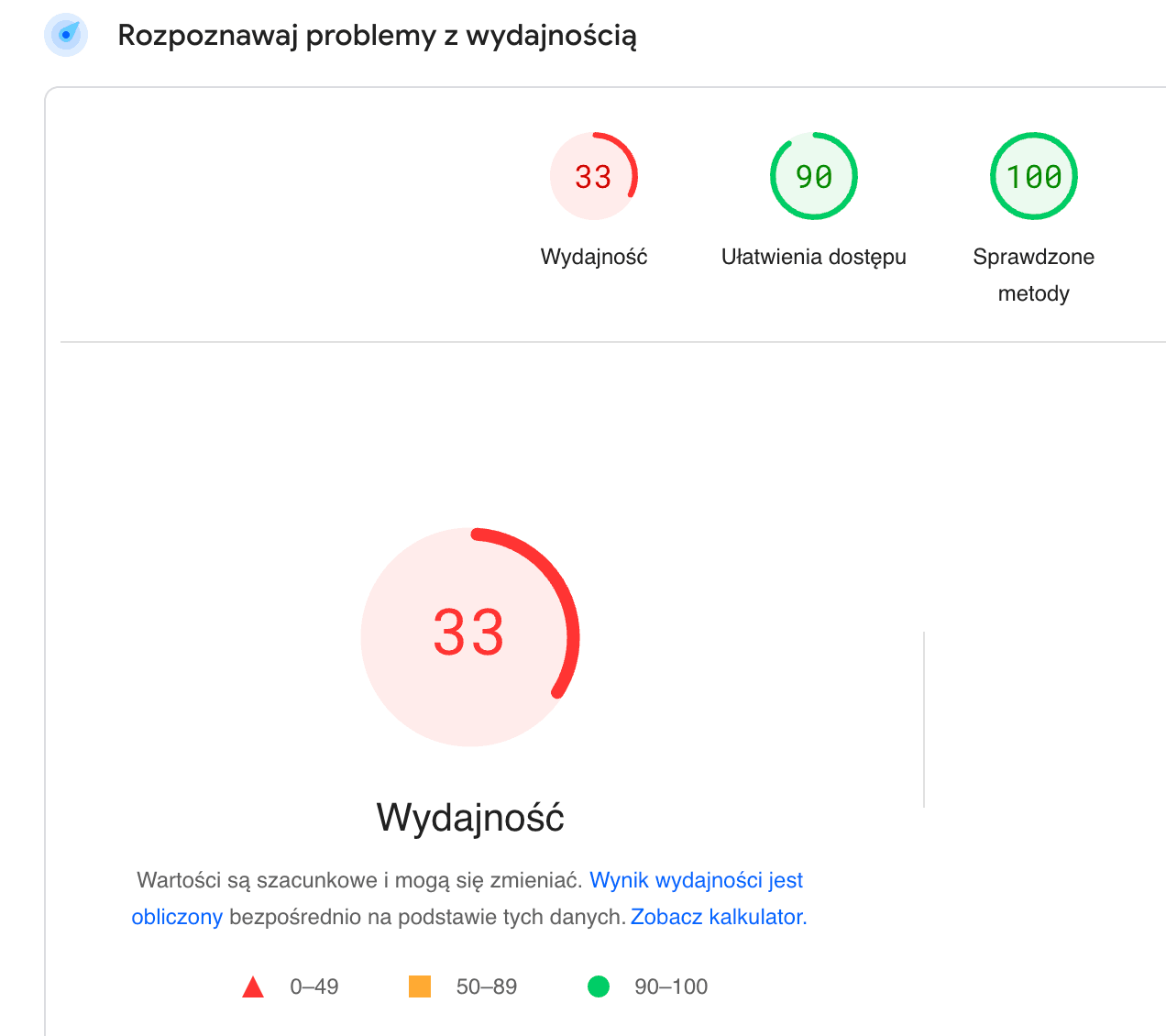
- Responsiveness — adapting the site for mobile devices
- Security — implementing HTTPS to ensure a secure connection and increase user and search engine trust.

- URL structure — creating clear, logical URLs that make it easier to understand the site’s structure
High-quality content
Ensure that your site’s content is high-quality, engaging, and properly optimized. Texts should be written by domain experts, free from errors and inaccuracies. Remember the E-A-T strategy (Expertise, Authoritativeness, Trustworthiness), which emphasizes credibility, authority, and reliability. The long-tail strategy is also a key SEO trend worth implementing to effectively target niche queries.
Summary
Google’s 2025 algorithm updates — especially the March 2025 Core Update — continue the trend of emphasizing high-quality content and combating unfair SEO practices. The core algorithm now more strongly promotes sites offering unique value, expertise, and content created with the user in mind — not the search engine.
Google now places greater emphasis on original, valuable content — content that is helpful to the user, not just optimized for the search engine.
As a result, sites that offer unique, high-quality content will be promoted. At the same time, companies using dishonest SEO techniques will be penalized with lower rankings.
For businesses and content creators, it’s crucial to adapt to the new rules by:
- focusing on valuable, original content,
- avoiding keyword abuse and spammy tactics,
- ensuring the quality of internal and external links,
- optimizing for mobile devices and page speed,
- monitoring algorithm changes and adjusting your SEO strategy accordingly.
Google Search updates and SEO | Create content with Rodin
Want to publish valuable content on your site that Google’s algorithms will appreciate? Leave it to RodIN’s SEO specialists. We’ll create original content that ranks at the top of search results. With our support, algorithm updates won’t jeopardize your Google visibility.
We’ll write engaging, high-value content optimized for SEO while maximizing user value. As a result, you can focus on your business knowing the content on your site is positioned at the top.
Get in touch — together we’ll decide which actions to take first. Take advantage of our free service quote.

